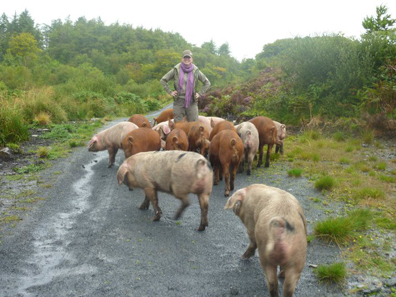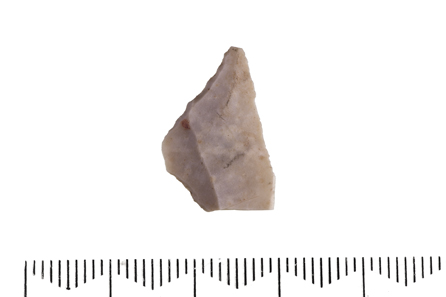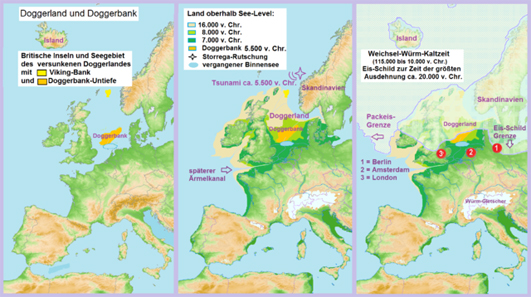by Annika Backe
January 7, 2016 – Pigs foraging along the Scottish coastline currently become the stars among archaeologists not only in Great Britain: More by chance, they discovered the earliest evidence of a culture of hunter-gatherers in Scotland, dating to ca. 12,000 BC.
Dr Karen Wicks of the University of Reading, surrounded by the four-legged “auxiliary archaeologists”.
The pigs were sent by their owner to the Scottish coastline to eliminate the quickly growing fern. During the “work” in the village of Rubha Port on the t-Seilich, the hungry herd uprooted artifacts and tools which clearly were quite old.
One of the found artifacts dating to the last Ice Age.
How old exactly was established by the archaeologists Prof Steve Mithen and Dr Karen Wicks of the University of Reading who were brought in quickly: They examined the animal bones, antlers fragments, spatula and tools made of crystal quartz and assessed that the material dates as far back as ca. 12,000 BC. Thus, the chronology of the early settlement of this area, the Isle of Islay, has to be re-assessed. Until this new discovery, it was assumed that the first people settled here at the end of the last Ice Age, around 9,000 BC.
Land bridge between mainland Europe and Great Britain – Doggerland and Doggerbank. Map showing the hypothetical extent of the Doggerland from the Weichselian glaciation until the current situation (in 2000). Photograph: Juschki / https://creativecommons.org/licenses/by-sa/4.0/deed.en
Now, it is proven that the settlers from the European mainland came to Scotland via the Doggerbank already 3,000 years earlier than hitherto assumed. The style of the tools suggests that they were made by representatives of the so-called Ahrensburgian Culture or the Hamburg Culture. These reindeer hunters lived in what is now Northern Europe during the last phase of the Paleolithic, from approximately 13,700 to about 9,600 BC. Since only a firing place was reconstructed on the newly discovered site in Scotland but no permanent settlement, the experts believe that the hunters came up to the British Island during the summer, crossing the rivers and marshes by boat. Once arrived, they chased animals and set up temporary camps in places like the Isle of Islay.
Whereas the find is nothing less than a sensation, the finders, on the other hand, showed outright modesty. They were content with just a little fern as a reward for their active excavation help.
We would like to thank Dr Karen Wicks, University of Reading/UK, for providing photo material. Please find the homepage of the University of Reading here.
And here you can learn more about the famous Lewis chess figures, which, according to an urban legend, were found on a beach in 1831 – by a cow.







